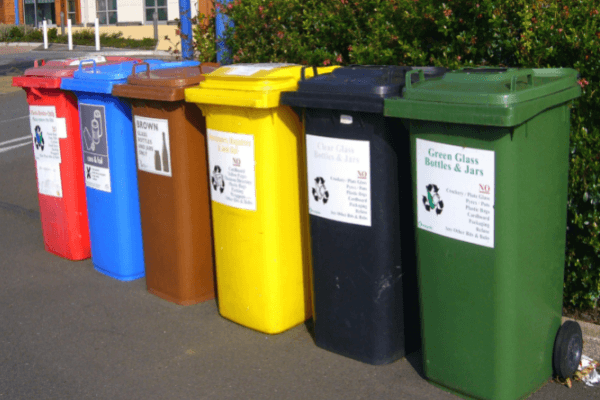One of the most significant initiatives for businesses of all sizes is creating sustainable packaging. Thanks to supply chain issues in dealing with the fallout from COVID, more states are passing laws that invest into a long-broken recycling system. But those laws are one piece of the puzzle.
There need to be better solutions. Both sustainable food packaging and sustainable packaging for everyday goods have become hot topics in many industries, for both investors and consumers alike, thanks to rising concerns about carbon footprint and plastic usage.
Some people think sustainable packaging can be recycled once used, but there’s more to it than that. From design to end-of-life, from material sourcing to what happens after sustainable packaging does its job, packaging should be considered carefully.
2022 will be a watershed year for many businesses. And for packaging, we’ll see thoughtful changes that ask ethical questions about how our goods are packaged and sold to consumers.
After looking through data and talking with our thought leaders, we came up with a list of some of the things to keep an eye out moving into 2022:
1. Accountability Will be the Norm
Investors and consumers alike care about accountability. With multiple laws on the books inching toward 2025, and specific goal posts set by the US government and global leaders, some of the world’s largest brands, like Anheuser-Busch, are making commitments toward more ethical business practices.
Plastic can take up to 1,000 years to decompose, depending on the material. Poland started using pressed hay for egg cartons, and IKEA has committed to packaging made from mushrooms.
There’s even a tool called Ubuntoo that rates environmental impact. Many companies base their metrics on the tool, which facilitates informed action. Corporate leaders must acknowledge their positions and bottom lines, and invest in different forms of packaging if they’re going to meet the new standards and government requirements by 2025.
2. Brands Will Get Serious About Sustainable Packaging
Eco-friendly packaging isn’t new, but advancements make it a much more affordable solution, thanks to sustainable packaging design. Biodegradable and compostable packaging options are becoming more popular thanks to their reduced impact on the environment.
Thinking strategically about how your packaging impacts the environment is bedrock to progress moving forward – there’s even an understanding packaging scorecard dedicated to sustainable packaging.
Some of the world’s top brands like Gucci have experimented with using bamboo paper, biodegradable seals, and stone paper. Minimalist packaging is also making an impact thanks to its adherence to using less of everything, including ink, cardboard for packaging, and less internal materials.
3. Producer Responsibility Will Matter
Extended producer responsibility (EPR), which already existed in Europe and Canada, finally reached America last year. Many states passed laws demanding manufacturers help pay for packaging collection and processing. In 2022, we’ll see more brands adopt transparency in their product messaging, stating just how recyclable and biodegradable they are.
Consumers have had no way to verify which products are recyclable or biodegradable. This is partly due to lack of federal standards, no enforcement, and the lack of clarity as to what’s considered “green.” With EPR, brands now have two years to define what’s recyclable clearly, and states like California will audit what’s entering processing facilities and what’s shipped out.
Oregon and Maine required companies selling packaged goods to join a producer responsibility organization (PRO) and pay their membership fees while reporting the quantity and types of packaged products sold. Oregon requires the 25 largest producers to disclose environmental impacts on their portfolios.
Both state laws demand that brands state if the material is recyclable, which clears up some of the challenges for the recycling system. Oregon’s law will infuse $82 million a year into the state’s recycling system.
4. Companies Will Celebrate Recycling
For packaging to be recyclable, it needs to meet three criteria:
- Be separable
- Labeled correctly
- Clean of any fluids or debris
Something as seemingly minor as using different inks can be impactful. Petroleum-based inks contain volatile organic compounds dangerous to humans and animals. Vegetable and soy-based inks are biodegradable, easier to de-ink when recycled, and are much less likely to release toxic chemicals. Using inks that aren’t toxic makes for easier recycling.
Additionally, exterior elements like flame retardants, fragrances, and biocides hurt flora and fauna. Washington, California, and Maine joined states passing legislation to ban poly-fluoroalkyl substances (PFAS) in packaging. Nationally, a bipartisan bill was introduced banning PFAS from food containers.
Brands should educate their customers on recycling, or about sustainable packaging, as some consumers may not be aware of what to do. Even simple labeling can go far if there are clear directions.
5. Brands are Getting Serious About Rethinking E-commerce Packaging
When the pandemic took over our lives, it affected shopping in a big way. Ordering with a click on our phones has now become routine. Businesses are seeing significant upticks through their online stores, which means they’re sending out products non-stop through the mail. Because of so many packages going out, this is a prime market opportunity for sustainable packaging design.
Not only can brands personalize their packages with names or designs specific to the company identity, but it’s an opportunity to make packaging sustainable. There are things to consider like: can we make this packaging with different, more sustainable materials? Can it be recycled? Or can we add something like simple instructions or a QR code to inform customers on what to do with the package once it’s opened in terms of correct disposal, upcycling, or reuse?
There will be a big changes in 2022 across the board and throughout many industries. Sustainable food packaging and sustainable packaging, in general, will be hot topics explored as markets and consumer demands are constantly changing.
If you’re interested in how you can change your food packaging sustainability, we’d love to help.



